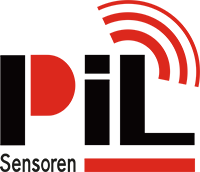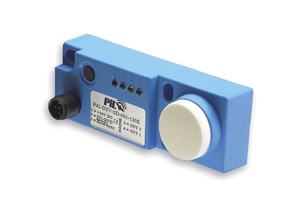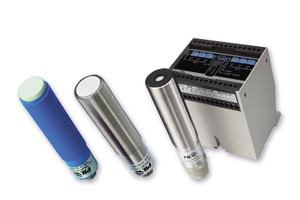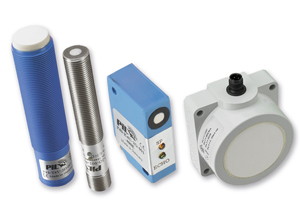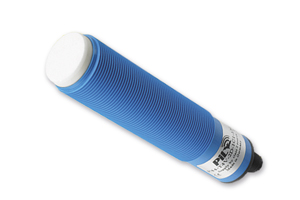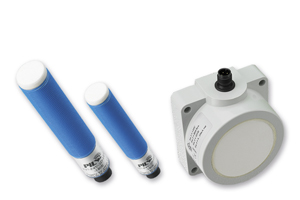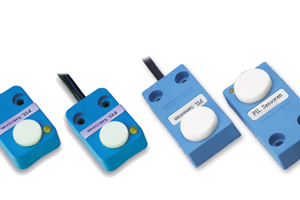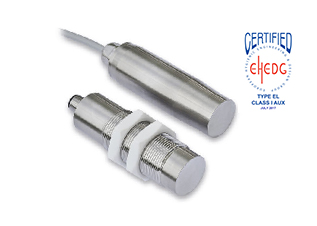Measuring with Ultrasonic
Bats are the most popular animals using the principle of ultrasonic for their orientation. They are discharging highly frequented sounds and use their reflected echo from objects to find out the position and distance of those.
This method is also usable in industrial measurement techniques. The sensors developed by PIL are based on the run-time measurement of the ultrasonic in the air and help to determine the position and distance from objects automatically.
Approximation switches, sensors and light barriers using different methods are able to recognize objects in fix distance areas but their functionality highly depends on the surface structure of the aimed objects. In general, they can not give any information about the exact position or the change of the position of an object.
The ultrasonic distance sensors of PIL were made to conquer these limited application possibilities. Even continuing requirements in distance measurement can be covered.
Productseries
With the productsseries P42, P44 and P47 PIL developed a variety of contact-free distance sensors, each optimized for different applications.
The used know-how is seen in many patents on authoritative techniques concerning ultrasonic sensors.
PIL-ultrasonic sensors stand out especially with:
- high definition
- optimized precision
- great sensing width
- low minimum distance
- great sensing distance
- high sealing up to IP68
Due to high carrier frequencies as well as a modern signal converting the sensors guarantee an exact operation without disruptions. For the transfer to a processing computer, there are analogue, digital or switching norm-outputs or RS232- and RS485-interfaces. With synchronization mechanisms, more sensors can be used at a time, which makes the sensing of structures with sensor arrays possible.
Functionality
The sensors are working with an ultrasonic converter for sending and receiving. In a certain tact specifically coded ultrasonic signals are send out. After the signals are reflected at the object that should be measured, they are received and decoded by the sensor. The recorded signal run-time is than temperature compensated and converted into a distance information.
Technology parameter
Measuring objects
Almost all materials and objects reflect sound and can be recorded in this way. Even sound damming materials such as wadding and foam rubber can be recorded with a limited sensing distance. The measuring objects can be hard, fluid or as powder. The ability of these sensors to record also transparent objects is very important.
Maximum measuring distance
The maximum measuring sensing distance to the measuring object depends on its reflection characteristics. This is determined by its size, material and surface structure. The objects can be in any shape and color, as long as an adequate echo to the sensor is reflected. Even very small objects, such as wires with a diameter of 0,2 mm, can be recorded. Objects differing from the ideal can lower the maximum sensing distance and sometimes the stability of the measuring values.
Beam angle
The opening angle of the beam angle of ~8 degree states the 3 dB-barriers.
In the closer part also objects out of those barriers can be recorded. The object has to be square to the sound axis, when the maximum distance is reached.
Measuring range
The measuring range is defined by the maximum sensing distance and the minimum measuring distance.
Measuring rate
Only when the echo impulse reached the ultrasonic converter again and this one faded away, a new impulse can be send out. That is why ultrasonic sensors with high measuring distances have small measuring rates and ultrasonic sensors with small measuring ranges do have high measuring rates.
Minimum distance, blind zone
The ultrasonic sensors are using a converter for the sending and receiving of the ultrasonic pulse. Due to the fact, that this one can not send and receive at the same time, there is a zone in front of the sensor, where the position of an object cannot be determined.
Sensing Distance
The maximum measuring distance is the one, where an adequate echo can still be received by the converter.
Environmental influences
Environmental influences such as moisture, dust and smoke do not affect the accuracy of the measurement. The sensors are made for the application in atmospheric air. The operation in other gas, e.g. carbon monoxide can cause measuring mistakes due to the differing specific sound velocity and damping. Even fluids, which evaporate a dissolver, can influence the sensor in its functionality.
All ultrasonic sensors of PIL are working with a temperature compensation, to balance changes of the sound velocity with temperature fluctuation. Strong movements in the air and turbulences are leading to an instability in the measurement. Stream pastes up to several m/s can still be handled without any trouble, that outdoor applications of any kind are possible.
Installation tips
The ultrasonic sensors can be installed in any position, as long as sediments on the sound-active face are avoided. The beam angle can also be deflected by the reflectors but at the expenses of the maximum sensing distance. A bundling of the beam angle is possible with a focused reflector.
